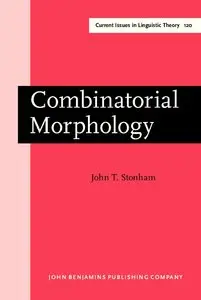Dr. John T. Stonham - Combinatorial Morphology (Current Issues in Linguistic Theory)
John Benjamins Publishing Company (December 1, 1994) | ISBN: 1556195745 | English | Pages: 219 | PDF | 17.3MB
John Benjamins Publishing Company (December 1, 1994) | ISBN: 1556195745 | English | Pages: 219 | PDF | 17.3MB
This book presents a detailed examination of the most important arguments for a process-based theory of morphology and offers a highly-constrained alternative to the powerful mechanisms proposed in processual theories of morphology.Data is presented from dozens of different languages from numerous language families around the world, much of it new to the linguistic forum. The importance of prosodic morphology in the analysis of linguistic phenomena is highlighted and the need for greater constraints on generative power is examined.
This work addresses some of the thorniest problems in morphological theory in a novel alternative fashion, including the issues of ablaut, exchange rules, metathesis, reduplication and subtraction, and presents reanalyses based on moraic morphology and the traditional notion of 'combination' of morphemes along with the underlying theme of constraining the grammar of natural language to the utmost.
Contributions to the field include: (i) new data from Nitinaht reduplicative constructions, Nootka hypocoristic formation, and Nootkan variable-length vowels; (ii) reanalyses of previous problems, including metathesis in Chawchila Yokuts, Hebrew, and Saanich, exchange rules in Luo, Dinka, and Diegueño, and truncation in Danish; (iii) analyses of new problems from reduplication in Nitinaht and Nootka templatic morphology; and (iv) new theoretical apparatus is introduced: the unification of templates and a new proposal for hierarchical syllable structure based on the mora as head of N.



